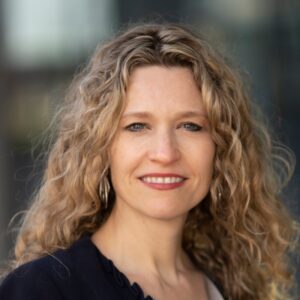
Iasa Global, the world’s leading professional association for business technology architects, has announced a new global initiative that will accelerate the pathway for women in architecture as well as amplify their impact across the discipline. WI – Women In Architecture.
“As organizations navigate some of the most massive shifts in the history of our globally connected and increasingly digital world, the role of the BT Architect has never been more critical,” said Paul Preiss, the CEO and founder of Iasa Global. “As a global discipline and community of practitioners, we are going to need every one of us to be at our best to help navigate the changes and challenges ahead – and to make sure that the business models and technology of today create a collective tomorrow that we all want to live in.
“As we prepare to rise to this occasion, there is a shocking truth about the discipline of architecture to consider though: only around 10% of architect roles are performed by women. At a time when we need the greatest diversity of ideas, perspectives, approaches, talents, and experiences, as well as sheer capacity, we are operating at a significant disadvantage.”
Whynde Kuehn, Founder and Managing Director of S2E Transformation Inc., is chair of the leadership committee for the initiative.
“It is our mission not only to encourage more women to join the discipline of architecture, but for our entire architecture community to come together – leveraging our own diversity as the way forward to build unity and harness the full power of architecture to make a difference for our organizations, societies, and world,” said Kuehn.
In addition to Kuehn, the leadership includes:
- Chris Cooper-Bland, Group Head of Architecture, Endava
- Cary Brown, Executive Director of Architecture, Charles River Laboratories
- Geeta Pyne, Chief Enterprise Architect, Intuit
- Gurpreet Bal, Head of Enterprise and Solution Architecture, Guardian Life
- Grant Ecker, Chief Architect, WBA and Chair of the Chief Architect Forum
- Linda Finley, Chief Architect, Cargill
As can be seen in the leadership, the initiative is not simply for women members, but for anyone who believes in promoting and moving forward the mission and vision of the group.
The initiative is having a soft launch now to begin the development of programs and to get the community programs in place. Check the website for the firm launch in September with programs and membership in place to accomplish the mission of the WIA.
Iasa Global’s Approach to the Initiative
Linda Finley noted that Women In Architecture will be a catalyst and focal point to:
- Centralize and coordinate efforts and partnerships
- Create a unified voice for education and advocacy
- Facilitate meaningful and actionable dialog
- Drive action that creates the pathway for women in architecture
“We will work with an ecosystem of partners,” said Preiss.
Specifically, the initiative calls for WIA “to partner and collaborate with many other organizations to build awareness and advocacy and deliver on our mission. Our partnerships range greatly, from organizations that focus on women in business or technology, to universities, governments, and professional associations.”
Finally, what follows are some very specific focus areas, including:
- Data Gathering – Gathering, analyzing, and communicating the quantitative and qualitative facts about women in architecture to illuminate gaps and opportunities, and create awareness.
- Education – Creating and disseminating materials as well as speaking to a broad range of audiences to educate, inspire, and promote women in architecture. Outreach efforts target a broad range of audiences and perspectives from schools and universities to governments and corporations. Efforts target not only people who can facilitate change within their organizations and institutions, but also women to inspire and educate them to join the architecture discipline.
- Content – Generating articles, videos, and other media to help educate, inspire, promote the voices and perspectives of women in architecture, and facilitate dialog related to women in architecture.
- Community and Exchange – Creating forums and communities with various levels (e.g., global and local) and focuses on facilitating dialog, collaboration, and support among women and among men and women.
- Events – Creating and sponsoring online and in-person events for women and men to learn, discuss, and act on women in architecture-related topics.
- Mentoring – Facilitating a mentorship program to help women in architecture advance and succeed on their journeys.
- Awards and Grants and Special Programs – Recognizing successful women in architecture as well as providing grants and other special programs that stimulate women in architecture, especially for those who may not otherwise have the opportunity or means.
- Pathway Building – While exact steps are yet to be determined based on data gathering and conversations, this includes creating specific initiatives and taking specific actions that will help to create a pathway for women in architecture (e.g., conversations with universities, targeted awareness campaigns, etc.).
From initial feedback, interest and responses the leadership is very optimistic about the WIA’s potential.
“This initiative will encourage more and more women to become architects and assume leadership roles,” said Kuehn. “They are strong contributors and will shape architecture in new and unique ways that enhance the entire discipline. Now we just need to take it to the next level with intent and commitment.”
